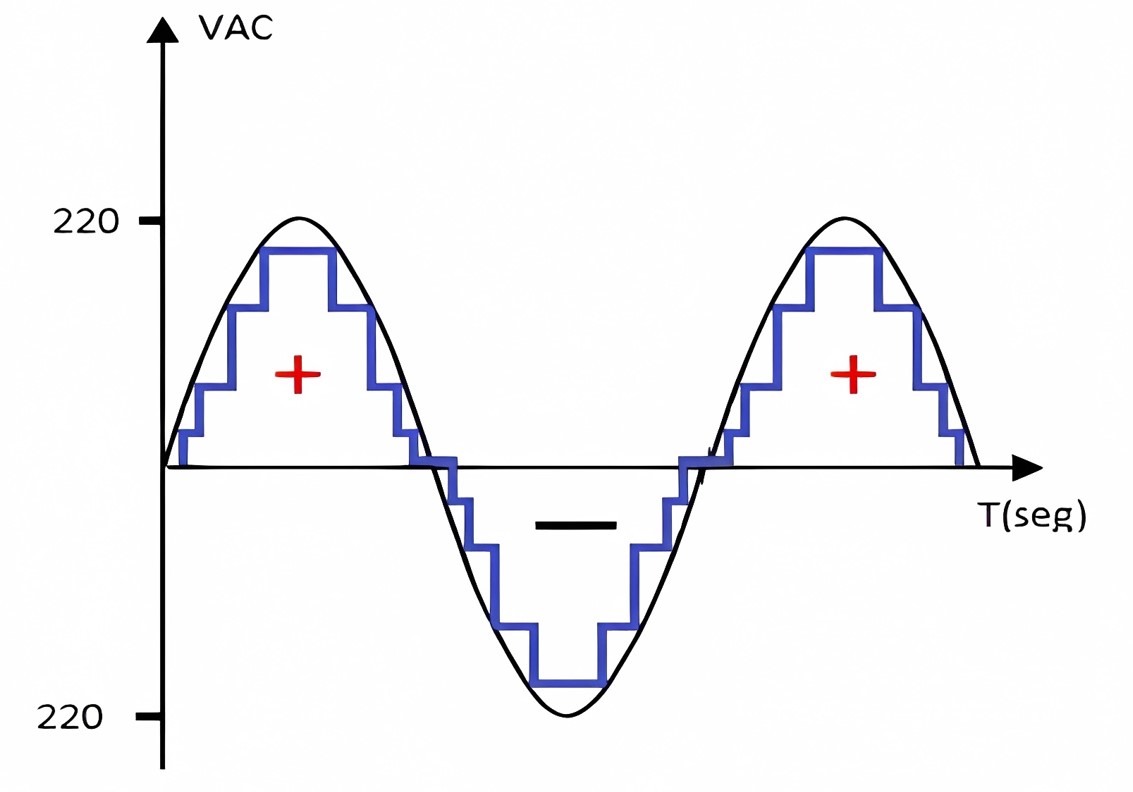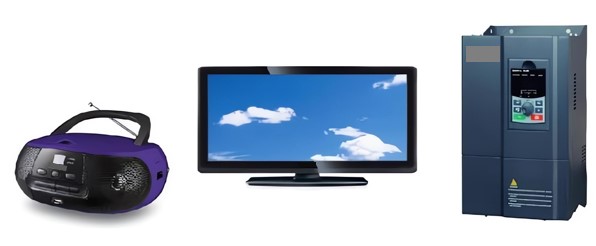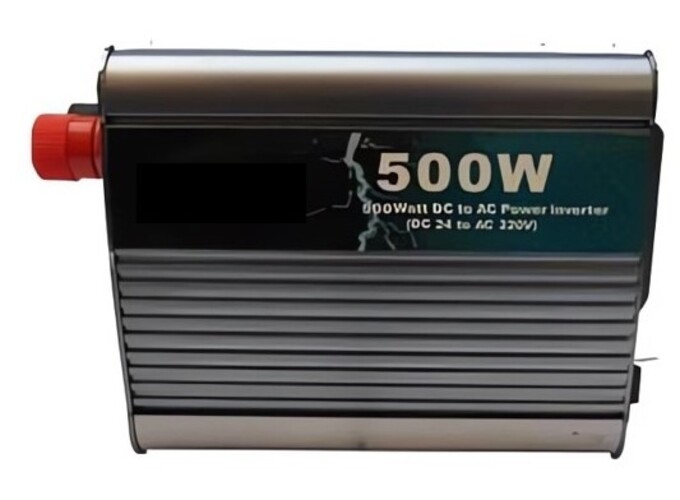Energía Solar
Modified sine wave inverter: what you need to know
When a DC energy signal is converted to AC electricity, it is the inverter that performs this transformation. The output waveform is a type of alternating signal that oscillates between a certain positive and negative value. Here, we will discuss the modified sine wave inverter.
Depending on the technology used for the transformation, this waveform can have different characteristics. These include:
In our post titled Types of electrical signals or waveforms you can find a more detailed explanation of these waveforms. Give it a read as it will provide you with valuable information!
The alternating output signal will have voltage and power characteristics that depend on the inverter itself and the country’s standards. For example, there are inverters with 120V or 230V AC outputs, as well as various power ratings like 500W, 1000W, etc.
There are three types of inverters: square wave inverter, pure sine wave inverter, and modified sine wave inverter. As mentioned earlier, this post focuses on the modified sine wave inverter, which is widely used in photovoltaic systems. Let’s get started!
Modified sine wave AC-DC inverter
This is a type of inverter that creates an alternating current (AC) waveform by passing the direct current (DC) through an electronic circuit. It is composed of a series of digital switches that operate at high speed, opening and closing at a constant and predefined frequency.
As a side note, in order to visualize this mentioned waveform, you would need a device called an oscilloscope, which you should connect appropriately.
The mentioned process results in a waveform that may initially appear to be a perfect sine wave. However, in reality, it is composed of a series of small variations in the form of stepped squares arranged in a sinusoidal pattern.
In the following image, you can see this type of waveform, which is indicated in blue.

Its advantages and disadvantages
As you can observe from the image above, this signal is a very good approximation of a sine wave. However, it is still not suitable for powering highly sophisticated and sensitive equipment.
This is because it has abrupt changes, which produce electrical noise and harmonics. Although to a much lesser extent than in the case of the square wave generated by square wave inverters.
Modified sine wave inverters are more expensive than square wave inverters due to their sophisticated and complex electronics.
However, they are less costly than pure sine wave inverters while providing lower-quality output. Commercially available devices with this technology can perform well if selected properly.
Another advantage is that they are compact and lightweight compared to inverters of similar power capacities with other technologies.
We invite you to read our posts on this topic, starting with The solar inverter: what you need to know before buying. Part 1. You can’t afford to miss them!
In conclusion, the output of a modified sine wave inverter is not a perfect sine wave in all its characteristics. However, it works very well with equipment that is less sensitive to the quality of the power supply, which includes the majority of household appliances.
Applications of modified sine wave inverters

This type of inverter is recommended for low-power solar systems, up to 1500 to 2000 W, and should not have loads with rotating elements such as high-capacity air conditioners or refrigerators, etc.
Additionally, these loads should be low-consumption and not have motors, especially because motors require high-quality energy. Here are some of its applications:
- In homes and recreational vehicles like campers, with basic household appliances such as TVs of any technology, fans, incandescent bulbs, LED lighting, and other basic appliances.
- Computers, servers, monitors, and similar equipment in general
- Phone chargers, radios, basic lights, and other low-consumption devices
On the other hand, the modified sine wave inverter is a good choice for use in solar power systems due to its versatility, performance, and low cost.
However, we suggest that you verify the loads you will connect to it to determine their compatibility and avoid future inconveniences.
Did you like this article?. If so, we invite you to leave your comment, and if you have any doubts, we’ll be happy to clarify them. In other posts. We analyze square wave inverters and pure sine wave inverters, pointing out their advantages and disadvantages. Don’t miss reading them!
On our website, energydcac, we have very interesting content for you on this and other related topics such as different types of inverters, DC energy equipment, solar energy systems, and much more.
Check it out; you’ll likely find it appealing, as it’s designed to be easy to understand without complicated technical jargon.
Image sources
- amazon.es
- energydcac.com

